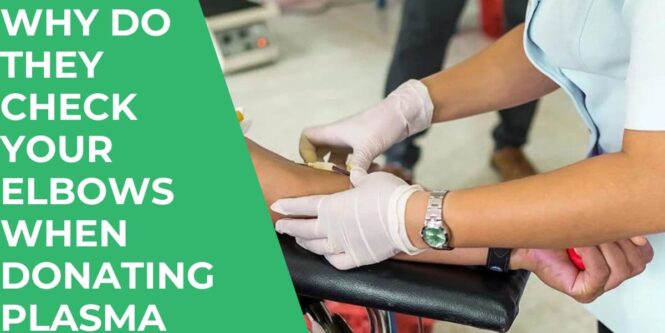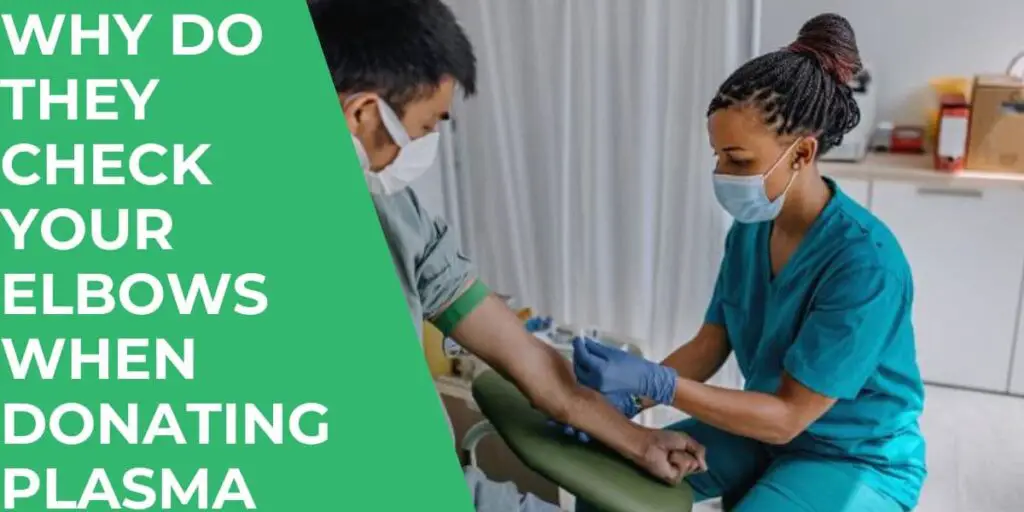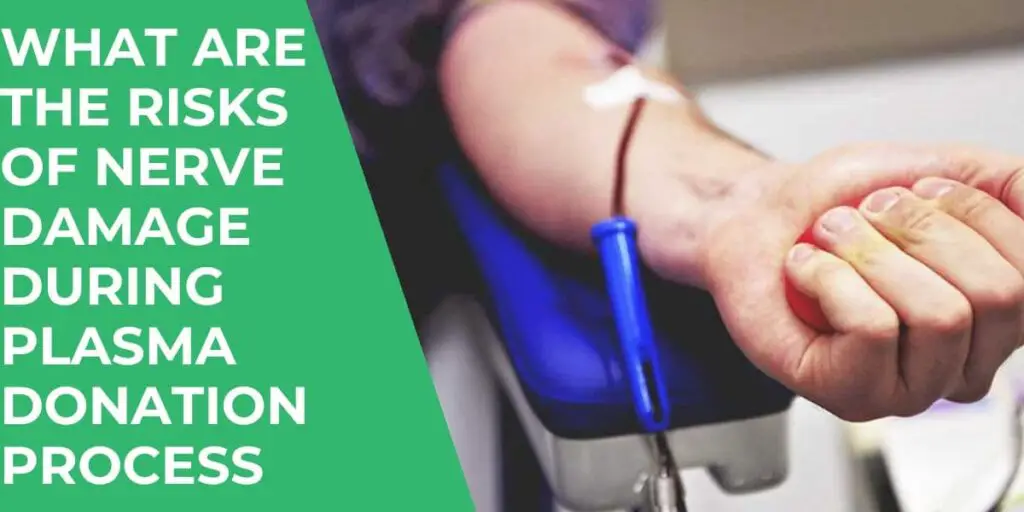
I remember wondering to myself when I went for plasma donation for the first time: Why Do They Check Your Elbows When Donating Plasma?
I mean, I knew they would stick a needle in my arm, but why were they so interested in my elbows?
As it turns out, there’s a good reason for it, and understanding why can help you be a better donor.
In this article, I’ll explain why those elbow checks are so important.
Why Do They Check Your Elbows When Donating Plasma?

Medical staffs check elbows during plasma donation because the cephalic and basilic veins, used to draw blood during plasma donation, are located there. They examine these veins and the skin for cuts or bruises to ensure a safe donation process.
Have you been wondering if plasma donation can give you scars? Check my post on Does Donating Plasma Leave Scars to get the appropriate answer.
How is the Elbow Check Done When Donating Plasma?
To perform an elbow check when donating plasma, the medical staff will follow these steps:
- Roll up your sleeves to expose your elbows.
- Clean the area around your elbow with an antiseptic.
- Increase blood flow around the elbow by applying a tourniquet to your upper arm.
- Examine the veins in your elbows to ensure they can handle the donation process.
- Check your elbows for cuts, bruises, and other injuries.
- Determine if you are eligible to donate plasma after checking your skin condition.
If you are worried about long term risks, check out this article on Long Term Side Effects of Donating Plasma Regularly.
What is the Role of the Elbow Check in the Plasma Screening Process
The elbow check is an essential step in the plasma screening process. It involves examining the condition of the cephalic and basilic veins in the elbow and the skin around it. This ensures these veins are healthy and can handle the plasma donation process.
Any injury around the elbow area could pose a risk during donation. Therefore, by performing an elbow check, the medical staff can identify potential issues and take appropriate measures to prevent complications during the plasma donation process.
Location of Nerves in the Elbow
The three nerves running through the elbow are the ulnar, radial, and median. These nerves transmit signals that control movement and sensation in the arm and hand.
The ulnar nerve is located inside the elbow and the radial on the outer part. The median nerve runs through the middle of the elbow.
Why Elbow Veins Matter in Plasma Donation
In plasma donation, the median cubital vein is often chosen due to its size and ease of access. Successful plasma collection hinges on effectively tapping into this vein without affecting the surrounding nerves.
The elbow check ensures that this vein is suitable for donation and helps avoid any complications that might arise from inadvertently puncturing a nerve or a less accessible vein.
Nerve Safety During Plasma Donation
While vein accessibility is important, safeguarding the nerves near the elbow is equally vital. Nerve damage, though rare, can result in discomfort, pain, or even temporary loss of function in the hand. The elbow check involves palpating the area to locate the best vein while ensuring that the nerves are not at risk during the donation process.
The Role of the Elbow Check in Preventing Nerve Damage
The elbow check is a preventive measure to protect against nerve damage. By carefully examining the elbow area, healthcare professionals can identify the most suitable vein for donation while minimizing the risk of nerve injury. This careful approach is critical for donor safety and comfort, making the elbow check a non-negotiable part of the plasma donation process.
What Are the Risks of Nerve Damage During Plasma Donation Process

These are the risks of nerve damage during plasma donation:
- Pain in the arm
- Numbness
- Weakness in the arm
- Reduced range of motion in the arm and hand
- Permanent disability (rare).
Do you get tired after donating plasma? Check my post on Does Donating Plasma Make You Tired to discover why.
Risks Associated With Plasma Donation
These are the risks associated with plasma donation:
- Infection: Plasma donation has a risk of infection, as with any medical procedure that involves needles.
- Allergic reactions: Some people react to anticoagulants used during donation. So, if you are allergic to any medication, inform the medical staff before donation.
- Dehydration: Donating plasma can lead to dehydration. Drinking plenty of water during donation will help you stay hydrated.
- Low blood pressure: Plasma donation can cause a temporary drop in blood pressure, making some people feel dizzy. Always lie down during t donation and avoid standing up quickly afterward.
- Injuries: These are common side effects of needle insertion, but they usually go away afterward.
- Nerve damage: This occurs if the elbow is not handled properly during donation. If you experience discomfort or pain during or after the donation, notify the medical staff immediately.
Check out this article on Risks of Donating Plasma to learn more.
FAQs on Why Do They Check Your Elbows When Donating Plasma
These are the most frequently asked questions about Why Do They Check Your Elbows When Donating Plasma:
Is the Elbow Check Painful during plasma donation?
The elbow check during plasma donation may cause discomfort but is not painful.
Why is the median cubital vein often chosen for plasma donation?
The median cubital vein in the antecubital fossa is preferred for plasma donation due to its size and accessibility. It’s easier to insert a needle into this vein, and its superficial location reduces the risk of nerve damage.
Can an elbow check prevent all complications during plasma donation?
While the elbow check significantly reduces the risk of complications, it doesn’t eliminate them entirely.
What happens if a suitable vein can’t be found during the elbow check?
If a suitable vein isn’t found during the elbow check, the healthcare provider may check the other arm or advise the donor to return later.
Are there any long-term risks associated with the elbow check?
There are no known long-term risks associated with the elbow check itself. It’s a non-invasive, external examination intended to enhance the safety and efficacy of the plasma donation process.
Conclusion
I hope you now know Why Do They Check Your Elbows When Donating Plasma. It is because it helps ensure donor safety and prevent potential nerve damage.
While it may cause discomfort, plasma donation is generally not painful. Plasma donation plays a crucial role in providing life-saving treatments to patients.
